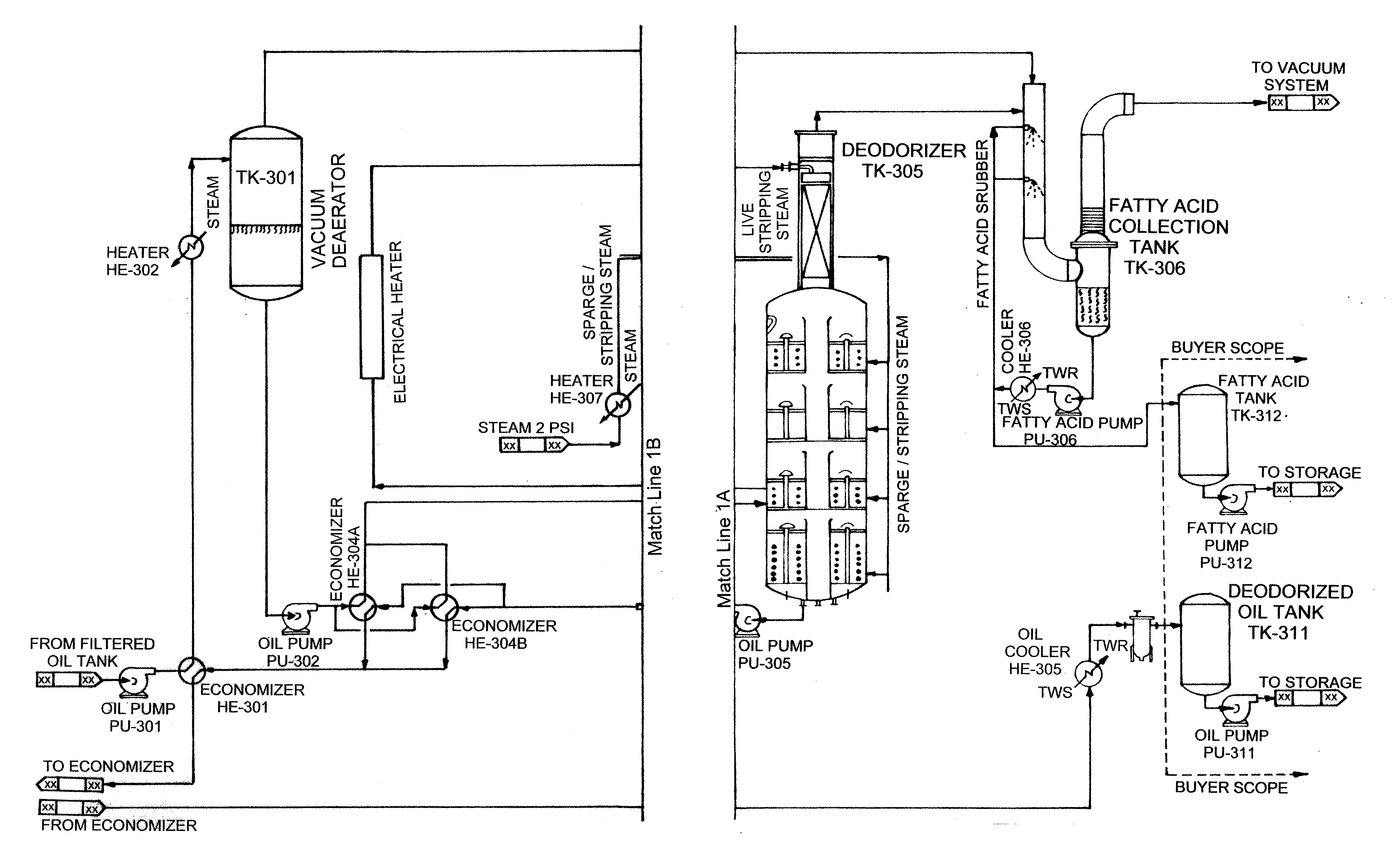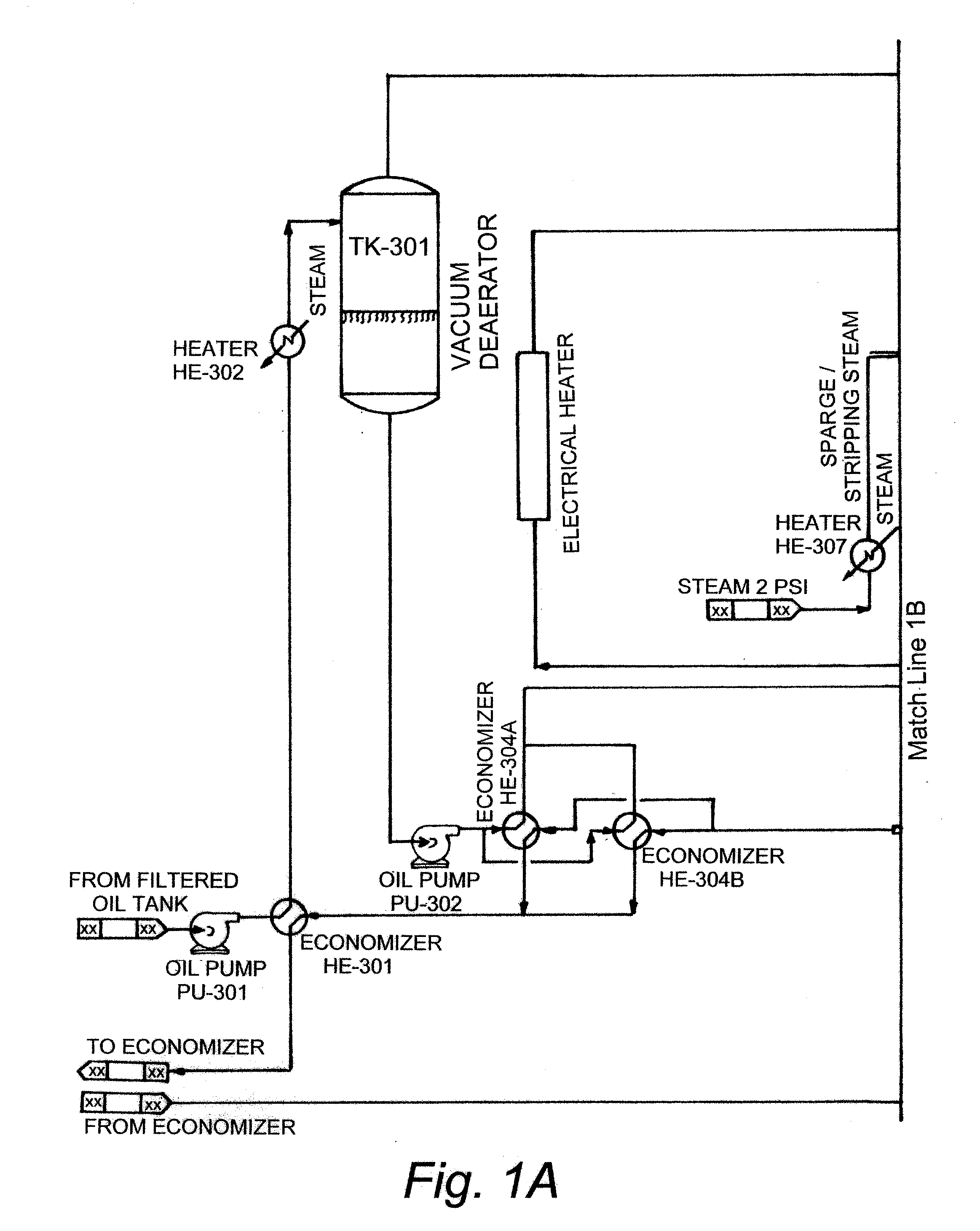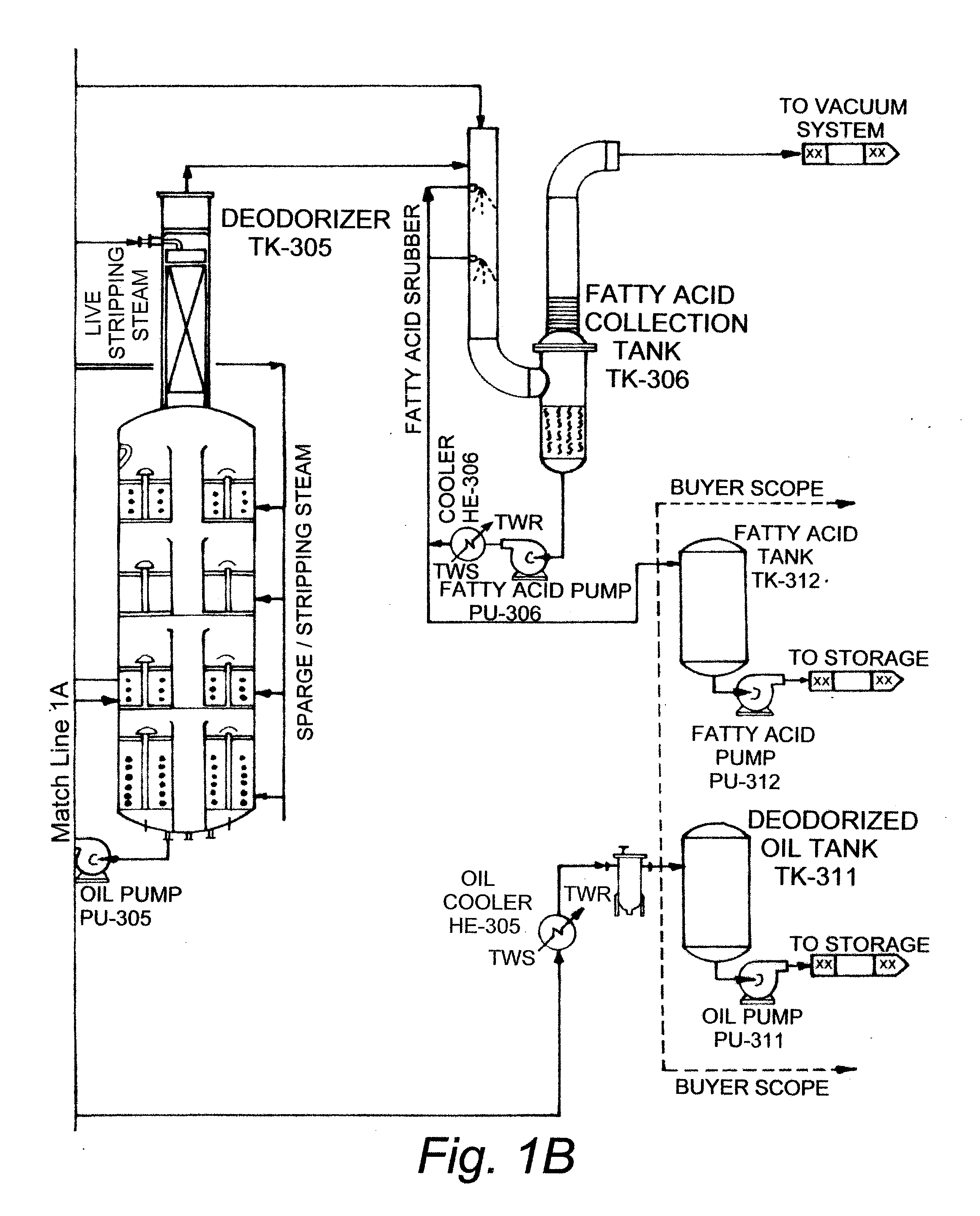Process of converting low and high free fatty acid containing oils into no free fatty acid containing oils
a technology of free fatty acid and process, applied in the oil field, to achieve the effect of increasing yield and reducing waste and energy consumption
- Summary
- Abstract
- Description
- Claims
- Application Information
AI Technical Summary
Benefits of technology
Problems solved by technology
Method used
Image
Examples
example 1
LFFA Oil (i.e., Oil Containing 2-20% FFA)
Step-1
[0025]The process of the invention includes a FFA stripping step wherein low free fatty acid (LFFA) oil (1-20% FFA by wt %) is first stripped of FFA. With reference to FIG. 1, the oil is pumped by PU-701L through a start-up heater HE-701L to a deareator TK-707. The purpose of the deareator is to remove any air or moisture contained in the feedstock. The deaerator operates at temperature of 70° C.-120° C. (preferred between 80-100° C.) and pressure of 25-200 mm Hg absolute depending upon the moisture content (preferred between 50-75 mm).
[0026]The deaerated-oil is pumped by pump PU-707 through economizer HE-701 and heater HE-703A / 703B into a pre-distiller TK-704. The temperature is raised to between 180° C.-300° C. (preferred between 230-280° C.) at a pressure of 1-10 mm Hg absolute (preferred between 3-5 mm).
[0027]A majority of the FFA flashes off in the pre-distiller. The remaining oil flows over to FFA stripper TK-705 where the remaini...
example 2
Oil Containing 20-100% FFA
Step-1
[0030]The process of the invention consists of a glycerin-esterification step wherein the high free fatty acid (HFFA) containing oil (20-100% FFA) is pumped from tank TK-701H with pump PU-701H. The HFFA oil is pumped through a start-up heater HE-701H to reactor TK-703. The reaction temperature is between 160° C. to 300° C. (preferred between 200-260° C.) at a pressure of 10 mm to 150 mm Hg absolute (preferred between 30-75 mm Hg absolute).
[0031]Technical-grade glycerol is pumped from tank TK-702 into the reactor TK-703 with dozing pump PU-702. The fatty-acid contained in HFFA oil reacts with glycerol and converts to oil. A byproduct of the reaction is water. The water is continuously removed from the reactor due to heat and vacuum. Any glycerol that is vaporized and carried along with water is condensed in condenser-1 at a controlled temperature so only glycerol is condensed. The water vapors are allowed to pass on to condenser-2 where it is condensed...
PUM
| Property | Measurement | Unit |
|---|---|---|
| pressure | aaaaa | aaaaa |
| temperature | aaaaa | aaaaa |
| temperatures | aaaaa | aaaaa |
Abstract
Description
Claims
Application Information
 Login to View More
Login to View More - R&D
- Intellectual Property
- Life Sciences
- Materials
- Tech Scout
- Unparalleled Data Quality
- Higher Quality Content
- 60% Fewer Hallucinations
Browse by: Latest US Patents, China's latest patents, Technical Efficacy Thesaurus, Application Domain, Technology Topic, Popular Technical Reports.
© 2025 PatSnap. All rights reserved.Legal|Privacy policy|Modern Slavery Act Transparency Statement|Sitemap|About US| Contact US: help@patsnap.com



